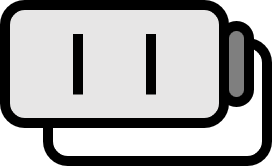Uniform Cone Condition
Definition1
If there exists a locally finite open cover $\left\{ U_{j} \right\}$ of the boundary of $\Omega$ and a corresponding sequence of finite cones $\left\{ C_{j} \right\}$ that satisfy $\text{(i)}$ ~ $\text{(iv)}$, then the open set $\Omega \subset \mathbb{R}^n$ is said to satisfy the uniform cone condition.
$\text{(i)}$ There exists $M \lt \infty$ such that every $U_{j}$ has a diameter smaller than $M$.
$\text{(ii)}$ For some $\delta \gt 0$ $\Omega_{\lt \delta}$$\subset \bigcup \nolimits_{j=1} ^\infty U_{j}$
$\text{(iii)}$ For every $j$, $Q_{j}:=\bigcup \nolimits_{x\in \Omega\cap U_{j}}(x+C_{j}) \subset \Omega$
$\text{(iv)}$ There exists some positive number $R$, for which every collection of $R+1$ of the sets $Q_{j}$ has an empty intersection.
Robert A. Adams and John J. F. Foutnier, Sobolev Space (2nd Edition, 2003), p83 ↩︎
